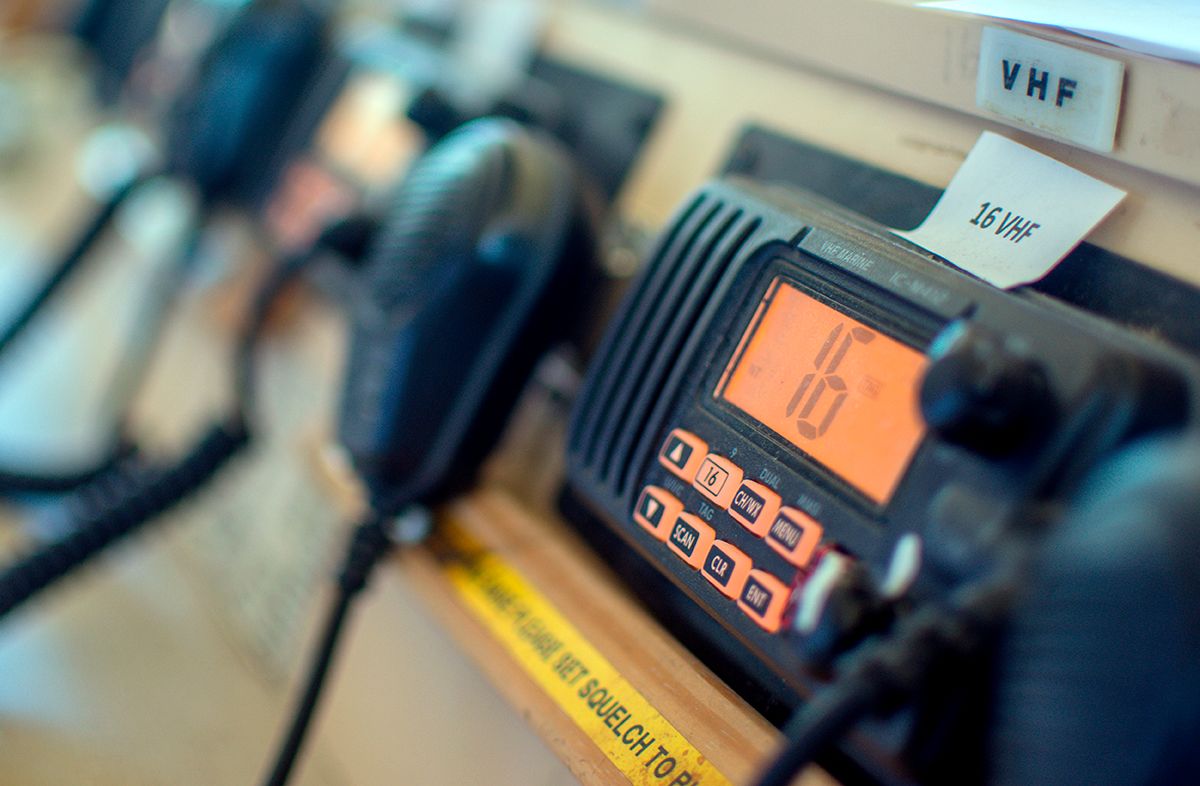
Marine radios are essential for communication at sea, ensuring safety and coordination among vessels. But how much do you really know about these devices? Marine radios aren't just for emergencies; they play a crucial role in daily maritime operations. From weather updates to navigation assistance, these radios are a sailor's best friend. Did you know that marine radios operate on very high frequency (VHF) bands? This allows for clear communication over long distances. Plus, they come with features like Digital Selective Calling (DSC) for automated distress signals. Whether you're a seasoned sailor or a curious landlubber, these 30 facts will give you a deeper understanding of marine radios. Stay tuned to learn more about their history, functionality, and importance in maritime safety.
What is Marine Radio?
Marine radios are essential communication tools for anyone venturing out on the water. They provide a reliable way to communicate with other vessels, marinas, and emergency services. Here are some fascinating facts about marine radios.
- Marine radios operate on Very High Frequency (VHF) bands, specifically between 156 and 174 MHz.
- The International Telecommunication Union (ITU) regulates marine radio frequencies to ensure global compatibility.
- Channel 16 (156.8 MHz) is the international distress, safety, and calling frequency for marine radios.
- Marine radios can transmit over distances of up to 20 miles, depending on the power and antenna height.
- The U.S. Coast Guard monitors Channel 16 24/7 for distress calls and emergencies.
Types of Marine Radios
Different types of marine radios serve various purposes, from handheld devices to fixed units. Each type has unique features and benefits.
- Handheld VHF radios are portable and ideal for small boats or as a backup communication device.
- Fixed-mount VHF radios offer greater range and power, making them suitable for larger vessels.
- Some marine radios come with Digital Selective Calling (DSC) capabilities, allowing users to send automated distress signals.
- Marine Single Side Band (SSB) radios can communicate over much longer distances than VHF radios, even globally.
- Satellite phones are another option for marine communication, providing coverage in remote areas where VHF and SSB radios may not reach.
Safety Features of Marine Radios
Marine radios come equipped with various safety features to ensure the well-being of those on the water.
- DSC-equipped radios can send a distress signal with the push of a button, including the vessel's GPS coordinates.
- Many marine radios have weather alert functions, providing real-time updates on weather conditions.
- Some radios feature Automatic Identification System (AIS) integration, allowing users to track nearby vessels and avoid collisions.
- Marine radios often include a "man overboard" button, which sends an emergency signal if someone falls overboard.
- Built-in GPS receivers in some marine radios help pinpoint the vessel's location during emergencies.
Legal Requirements and Regulations
Using a marine radio comes with certain legal responsibilities and regulations to ensure safe and effective communication.
- In the United States, the Federal Communications Commission (FCC) regulates marine radio use.
- A Ship Station License is required for vessels traveling internationally or using certain frequencies.
- Operators must complete a Marine Radio Operator Permit (MROP) course to legally use a marine radio.
- It's illegal to use marine radios for non-essential communication, such as casual conversations.
- Regularly checking and maintaining your marine radio is a legal requirement to ensure it functions correctly in emergencies.
Interesting Historical Facts
Marine radios have a rich history, evolving significantly over the years to become the advanced devices we use today.
- The first marine radio distress call was sent in 1909 by the RMS Republic after colliding with another ship.
- During World War II, marine radios played a crucial role in naval communication and coordination.
- The development of VHF marine radios in the 1950s revolutionized maritime communication.
- The Global Maritime Distress and Safety System (GMDSS) was introduced in 1999, enhancing marine radio capabilities.
- The Titanic disaster in 1912 highlighted the importance of marine radios, leading to stricter regulations and improved technology.
Fun Facts About Marine Radios
Marine radios aren't just about safety and regulations; they also have some fun and interesting aspects.
- Some marine radios can connect to Bluetooth devices, allowing users to stream music or make phone calls.
- Certain models come with built-in AM/FM radios for entertainment during long voyages.
- Marine radios can be used for fishing tournaments to communicate with other participants and share updates.
- Many modern marine radios are waterproof and float, making them more durable and reliable.
- Some marine radios have customizable channel names, making it easier to remember frequently used channels.
The Final Wave
Marine radios are more than just gadgets; they're lifelines. From ensuring safety at sea to aiding in navigation, these devices play a crucial role. Remember, knowing how to use a marine radio isn't just for sailors or fishermen. It's for anyone who ventures out onto the water.
Understanding the different channels, the importance of the DSC feature, and the proper etiquette can make all the difference in an emergency. Plus, it's always good to stay updated with the latest technology and regulations.
So next time you're out on the water, take a moment to appreciate your marine radio. It’s not just a piece of equipment; it's your connection to safety, help, and the wider world. Stay safe, stay informed, and happy sailing!
Was this page helpful?
Our commitment to delivering trustworthy and engaging content is at the heart of what we do. Each fact on our site is contributed by real users like you, bringing a wealth of diverse insights and information. To ensure the highest standards of accuracy and reliability, our dedicated editors meticulously review each submission. This process guarantees that the facts we share are not only fascinating but also credible. Trust in our commitment to quality and authenticity as you explore and learn with us.
